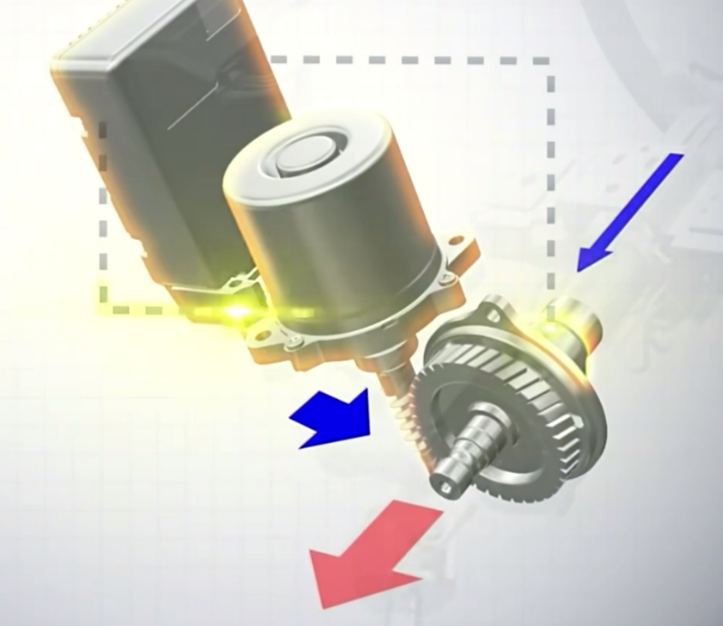
In mechanical systems, gears serve as the cornerstone for transmitting power and motion. Through the meshing of teeth, they precisely convert rotational motion into controlled torque, speed, or directional changes. From the intricate workings of clocks to automotive power transmission, gear design and performance directly determine a system’s efficiency, reliability, and longevity.
I. The Physical Essence of Gears
- Fundamental Definitions
Function: Transmit power via tooth contact, altering rotational speed, torque, or motion direction with a constant ratio.
Core Parameters:
- Tooth Form:
- Involute gears are widely used due to their ability to maintain a constant gear ratio and compatibility with precision generating machining;
- Rack tooth forms (flat-sided, non-involute) may also be employed for specific applications.
- Module: Defined as the ratio of pitch circle diameter to tooth count, governing gear sizing and load capacity.
- Gear Ratio: Determined by the ratio of driven/driver gear tooth counts (input/output speed relationship).
- Pressure Angle: Affects tooth stress distribution and NVH performance (typically 14°–25°).
- Helix Angle: Angle between tooth flank and gear axis, optimized to enhance meshing smoothness and load capacity.
- Gear Types and Characteristics
|
Type |
Structural Features |
Typical Applications |
|
Spur Gear |
Straight teeth parallel to axis; simple design |
Gearboxes, low-speed transmissions |
|
Helical Gear |
Angled teeth for smoother engagement |
Vehicle drivetrains, high-RPM systems |
|
Worm Gear |
Crossed axis shafts; high reduction ratios |
Electric Power Steering (EPS),precision motion control |
|
Bevel Gear |
Intersecting axes for directional power transfer |
Automotive differentials , steering systems |
|
Rack Gear |
Flat-sided teeth converting rotational to axial movement |
Steering racks (e.g., automotive steering systems) |
II. Gears’ Pivotal Role in Automotive Engineering
- The “Central Nervous System” of Power Transmission
- Transmission Systems: Gear sets in gearboxes enable multi-speed control via tooth count variations.
- Steering Systems:
-
-
- Worm gears amplify driver input torque to gearbox output through high reduction ratios, enabling efficient wheel turning;
- A helical pinion gear engages with a steering rack to convert rotational motion into axial wheel movement.
- Braking & Actuators: The Electric Braking System (EBS) converts the motor's rotational motion into clamping force via a precision gear mechanism, thereby enabling the brake pads to press against the brake rotor and generate braking torque.
-
- Performance Determinants
- Transmission Efficiency: Influenced by tooth geometry, lubrication, and manufacturing precision.
- NVH (Noise, Vibration, Harshness): Tooth design, manufacturing errors and misalignment may generate NVH.
- Durability: Material fatigue, wear, and pitting under cyclic loads are primary failure modes.
III. Challenges and Trends in Modern Gear Design
- Electrification-Driven Transformations
- Lightweighting: EVs demand 20%-30% gear weight reduction for extended range.
- High-Frequency Vibration: Instant motor torque amplifies dynamic loads on gears.
- Compact Design: Integrated e-drive systems require space-optimized gear layouts.
- Materials & Process Innovation
- Composites: Polymer-metal hybrids reduce friction compared to metal-metal interfaces while maintaining strength (e.g., EPS worm gears).
- Surface Treatments: Nitriding/DLC coatings improve wear resistance in metal gears, but are unnecessary for composite gears.
- Precision Forming: Powder metallurgy and advanced hobbing enable complex hub geometries and optimized tooth profiles.
IV. The Future Landscape of Gear Technology
- Smart Integration: Embedded sensors for real-time health monitoring.
- Sustainability: Plant-based materials and remanufacturing to reduce carbon footprint.
- Digital Design: AI-driven parameter optimization accelerates development cycles.
Redefining Gear Technology: Nylacast Automotive’s Innovation in Casting and Design
From Leonardo da Vinci's sketches to the electrified drivetrains of modern vehicles, gear technology has always been a symphony of material science and mechanical artistry. At Nylacast Automotive, this legacy is reimagined through our Nylacast Casting Process and polymer-metal hybrid gear solutions, which are driving the next evolution of automotive efficiency and sustainability.
In the automotive field, Nylacast Automotive has become an active participant in this transformation with its polymer products' outstanding performance in the Electric Power Steering system (EPS). The polymers produced by its advanced Nylacast Casting Process have core material property advantages such as ultra-high molecular weight and narrow molecular weight distribution, leading to enhanced durability and consistent material performance. Nylacast Automotive cooperates closely with customers' engineers to ensure that the gear design meets customers' specifications and incorporates our innovative value-added solutions. Nylacast Automotive products have also achieved remarkable results in the application of braking systems.
